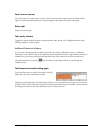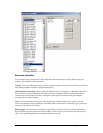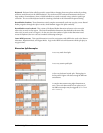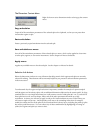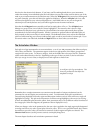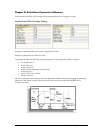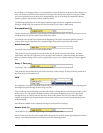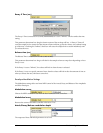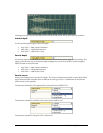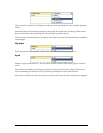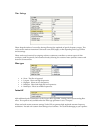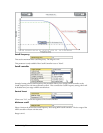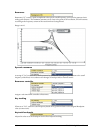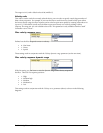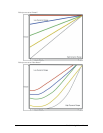
TASCAM GigaEditor 4 Manual 153
• O. No response to the MIDI control source.
• Low. Very light response to the MIDI control source.
• Medium. Medium response to the MIDI control source.
• High. More drastic response to the MIDI control source.
is allows the MIDI controller to aect only one, two or all three parameters at once and with varying
intensities for each.
e eect will depend on the actual envelope settings. For example, if the Attack time in the envelope is set
to zero, you will not hear any eect of the Mod controller. Once you enter a parameter higher than zero,
this controller will then start working. Smaller Attack time settings will result in very light changes with the
Mod controller. Larger settings will result in more drastic changes with the Mod controller. is also
applies to the Decay and Release settings. A little experimentation will be needed to learn how this works
and gure out the settings you need.
Amplitude/Filter/Pitch Low Frequency Oscillators (LFOs)
Amplitude LFO
Filter LFO
Pitch LFO
Low frequency oscillators are used to control various parameters cyclically, so that continuously repeating
changes over time can be automated. For example, applying an LFO to pitch creates the eect known as
vibrato. Applying an LFO to amplitude creates a cyclical change in volume known as tremolo. More exotic
eects can be created by applying LFOs to lter parameters, for creating repeating changes in harmonic
content such as “wah-wah” eects.
GigaStudio includes three discrete LFOs for Amplitude, Filter, and Pitch. e following explanations apply
to all three of these with one exception: the Pitch LFO does not have a “Flip Phase” switch.
LFO frequency (Hz)



